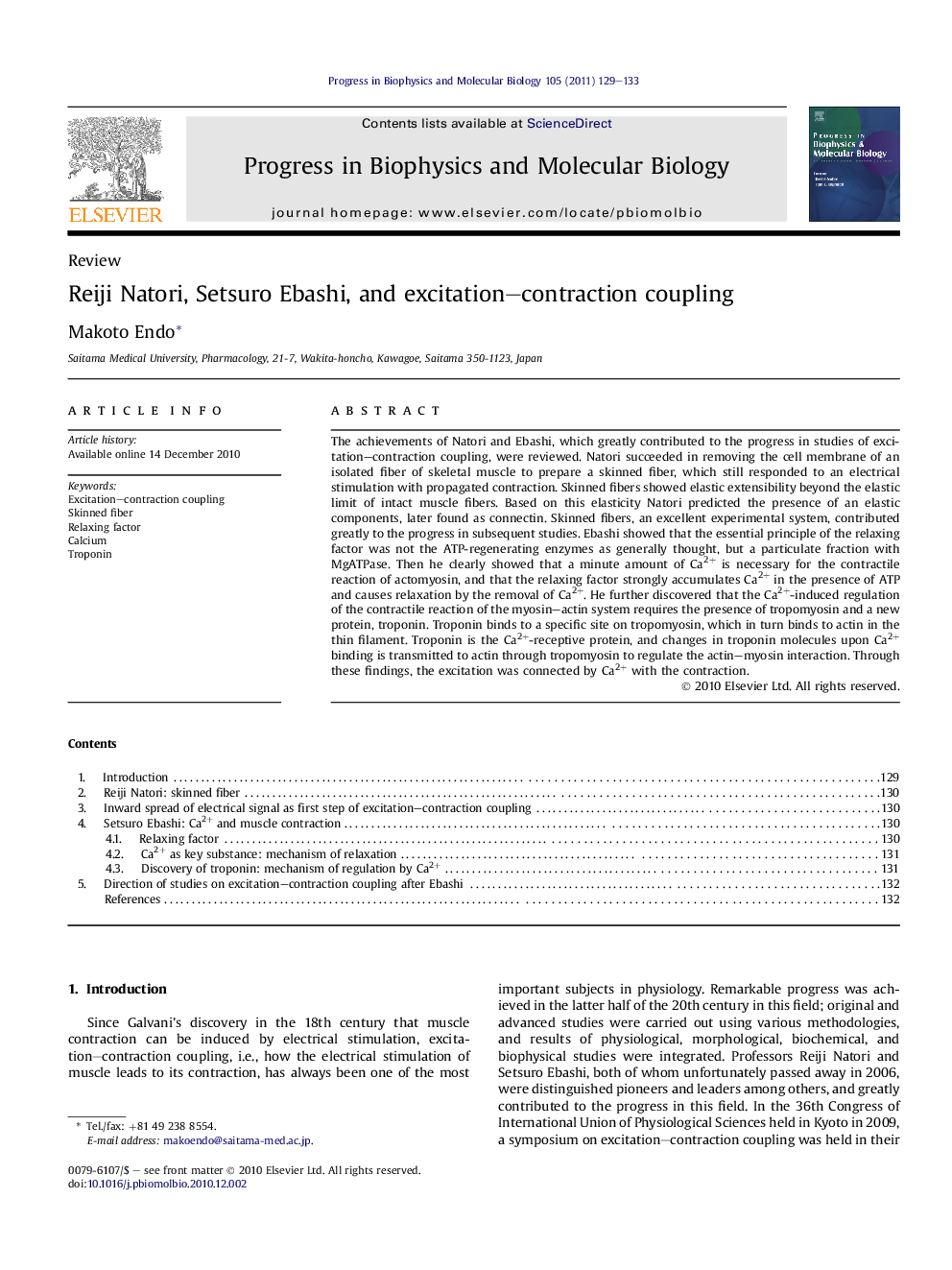| کد مقاله | کد نشریه | سال انتشار | مقاله انگلیسی | نسخه تمام متن |
|---|---|---|---|---|
| 2070219 | 1078476 | 2011 | 5 صفحه PDF | دانلود رایگان |

The achievements of Natori and Ebashi, which greatly contributed to the progress in studies of excitation–contraction coupling, were reviewed. Natori succeeded in removing the cell membrane of an isolated fiber of skeletal muscle to prepare a skinned fiber, which still responded to an electrical stimulation with propagated contraction. Skinned fibers showed elastic extensibility beyond the elastic limit of intact muscle fibers. Based on this elasticity Natori predicted the presence of an elastic components, later found as connectin. Skinned fibers, an excellent experimental system, contributed greatly to the progress in subsequent studies. Ebashi showed that the essential principle of the relaxing factor was not the ATP-regenerating enzymes as generally thought, but a particulate fraction with MgATPase. Then he clearly showed that a minute amount of Ca2+ is necessary for the contractile reaction of actomyosin, and that the relaxing factor strongly accumulates Ca2+ in the presence of ATP and causes relaxation by the removal of Ca2+. He further discovered that the Ca2+-induced regulation of the contractile reaction of the myosin–actin system requires the presence of tropomyosin and a new protein, troponin. Troponin binds to a specific site on tropomyosin, which in turn binds to actin in the thin filament. Troponin is the Ca2+-receptive protein, and changes in troponin molecules upon Ca2+ binding is transmitted to actin through tropomyosin to regulate the actin–myosin interaction. Through these findings, the excitation was connected by Ca2+ with the contraction.
Journal: Progress in Biophysics and Molecular Biology - Volume 105, Issue 3, May 2011, Pages 129–133